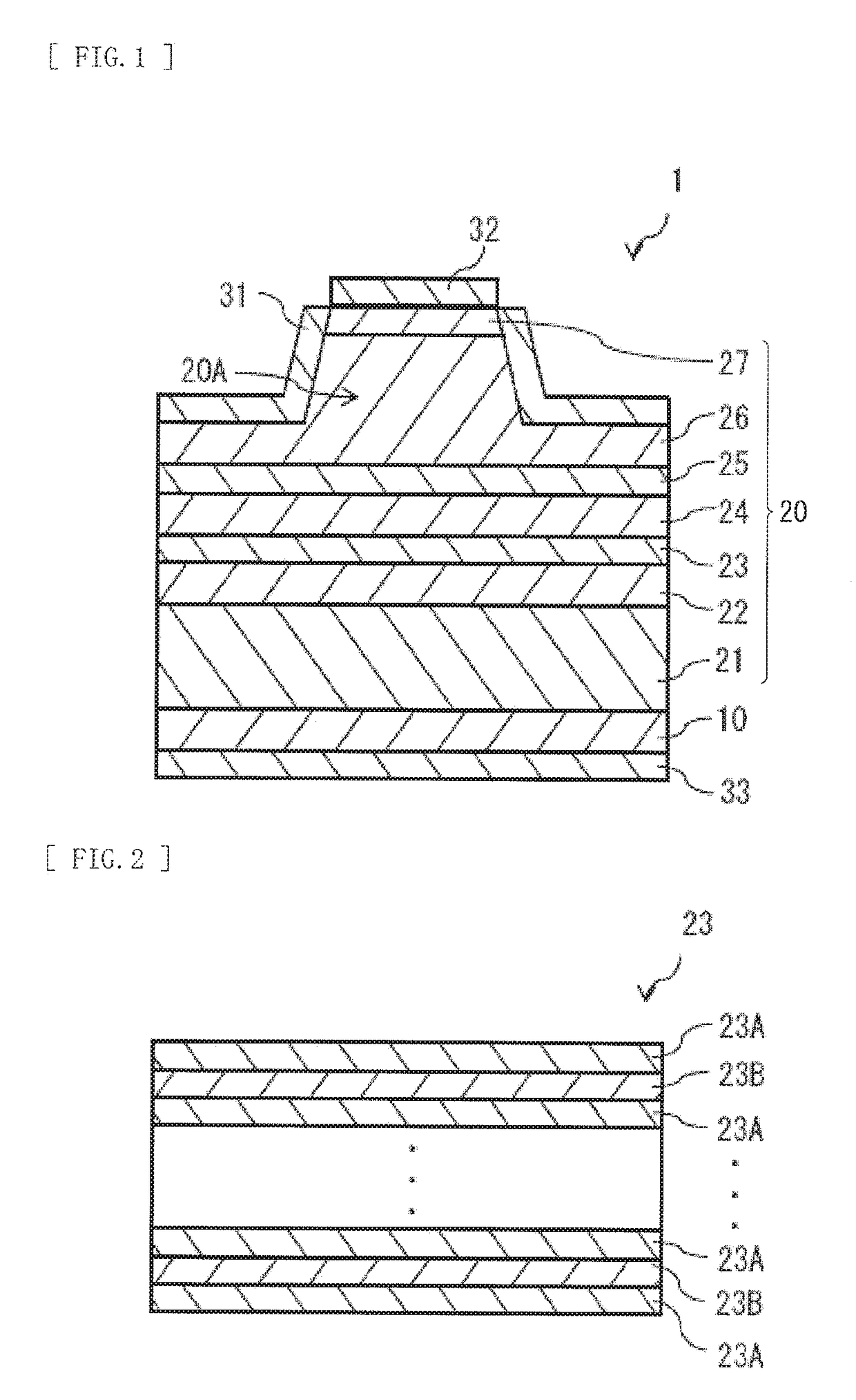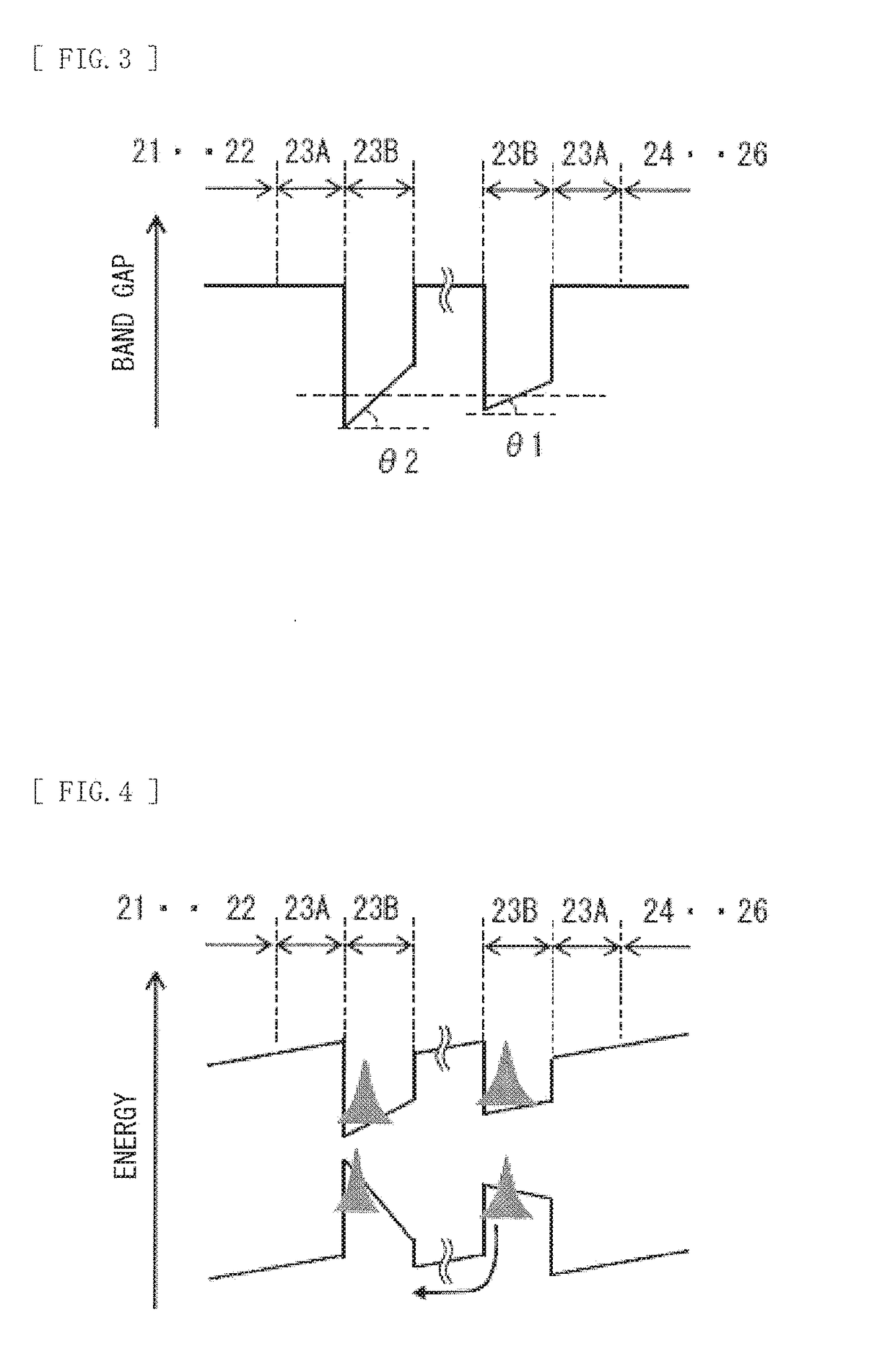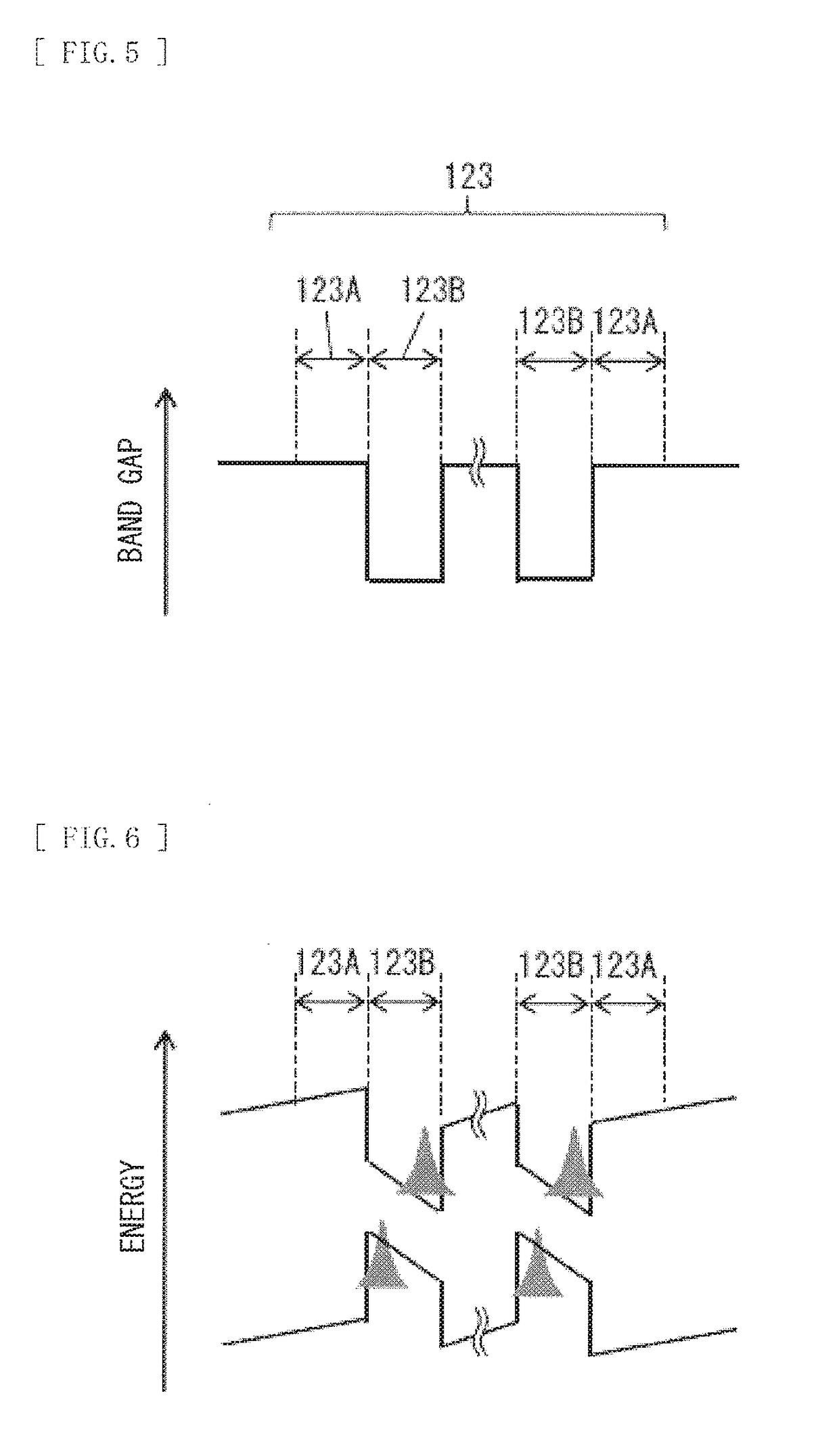Semiconductor light-emitting device, display unit, and electronic apparatus
a technology of semiconductor lasers and light-emitting devices, applied in semiconductor lasers, identification means, instruments, etc., can solve the problems of insufficient improvement of light-emitting intensity and spatial separation, and achieve the effects of reducing ith, suppressing disincentive factors, and improving efficiency of semiconductor laser devices
- Summary
- Abstract
- Description
- Claims
- Application Information
AI Technical Summary
Benefits of technology
Problems solved by technology
Method used
Image
Examples
first embodiment
1. FIRST EMBODIMENT
[Configuration]
[0043]FIG. 1 illustrates a cross-sectional configuration example of a semiconductor light-emitting device 1 according to a first embodiment of the present disclosure. The semiconductor light-emitting device 1 is a semiconductor laser or a light-emitting diode. It is to be noted that the semiconductor light-emitting device 1 regarded as a semiconductor laser is described below. The semiconductor light-emitting device 1 has a configuration in which a semiconductor layer 20 to be described later is sandwiched between a pair of resonator end surfaces from a resonator direction (a direction where a ridge section 20A extends). Accordingly, the semiconductor light-emitting device 1 is one kind of so-called edge-emitting type semiconductor laser. The semiconductor light-emitting device 1 includes the semiconductor layer 20 on a substrate 10. The semiconductor layer 20 includes, for example, a cladding layer 21, a light guide layer 22, an active layer 23, a ...
modification examples
2. MODIFICATION EXAMPLES OF FIRST EMBODIMENT
[0084]Various modification examples of a display unit 1 according to the foregoing embodiment is described below. It is to be noted that in the following, components common to the components of the semiconductor light-emitting device 1 according to the foregoing embodiment are denoted by same reference numerals. Moreover, description of components common to the components of the semiconductor light-emitting device 1 according to the foregoing embodiment is omitted as appropriate.
modification example 1
[0085]In the foregoing embodiment, a case where the active layer 23 includes three or more well layers 23B is exemplified. However, the active layer 23 may include, for example, only two well layers 23B, as illustrated in FIG. 11. Even in this case, in the plurality of well layers 23B included in the active layer 23, the band gap inclination angle θ1 of the well layer 23B (the second well layer) located relatively close to the p-type semiconductor layer is smaller than the band gap inclination angle θ2 of the well layer 23B (the first well layer) located relatively close to the n-type semiconductor layer. As a result, in the active layer 23 including the plurality of well layers 23B, it is possible to improve transport of electrons or holes between the well layers 23B while reducing spatial separation of electrons and holes. Accordingly, it is possible to improve light emission intensity. Moreover, the Ith is decreased, and the semiconductor light-emitting device having high efficie...
PUM
 Login to View More
Login to View More Abstract
Description
Claims
Application Information
 Login to View More
Login to View More - R&D
- Intellectual Property
- Life Sciences
- Materials
- Tech Scout
- Unparalleled Data Quality
- Higher Quality Content
- 60% Fewer Hallucinations
Browse by: Latest US Patents, China's latest patents, Technical Efficacy Thesaurus, Application Domain, Technology Topic, Popular Technical Reports.
© 2025 PatSnap. All rights reserved.Legal|Privacy policy|Modern Slavery Act Transparency Statement|Sitemap|About US| Contact US: help@patsnap.com



